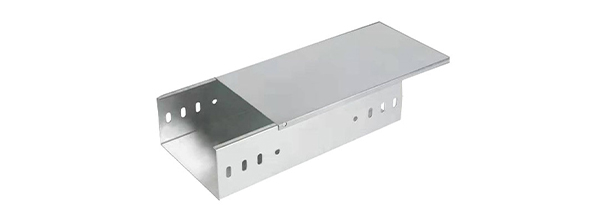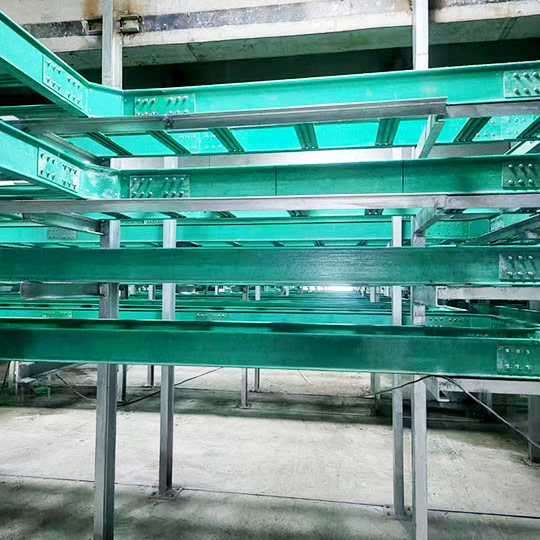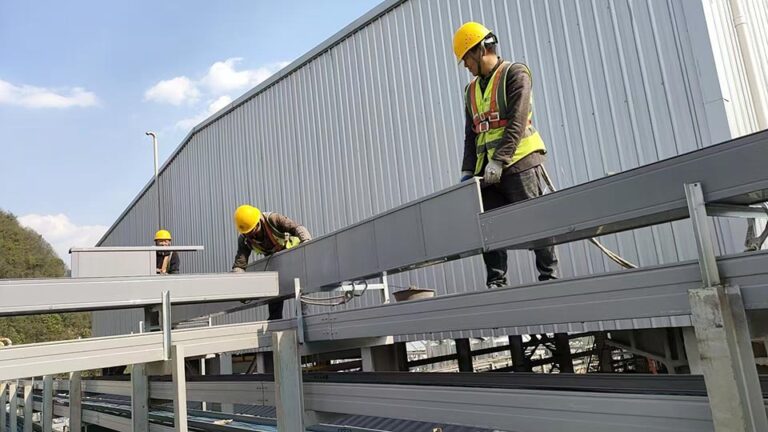Welcome to My Blog!
Before we dive into the content, I’d love for you to join me on my social media platforms where I share more insights, engage with the community, and post updates. Here’s how you can connect with me:
Facebook:https://www.facebook.com/profile.php?id=61576230391049
Now, let’s get started on our journey together. I hope you find the content here insightful, engaging, and valuable.
Table of Contents
Introduction
Choosing the right cable tray materials is more than just selecting metal or plastic — it’s a critical decision that impacts safety, cost, durability, and regulatory compliance across your entire cable management system. Whether you’re running power distribution in a manufacturing plant, managing control cables in an oil extraction facility, or supporting communication lines in a data center, the cable tray material you choose matters.
At Yidian, we’ve spent years helping clients across industries select the optimal cable tray solutions. This guide walks you through the common materials used in cable tray manufacturing, their strengths and weaknesses, and which environments each type performs best in.
By the end, you’ll have a better grasp of which material suits your needs — and how the right choice can reduce long-term costs while improving operational safety and efficiency.

Understanding the Importance of Cable Tray Materials
Why Material Selection Is Critical
The material of a cable tray determines:
- Corrosion resistance
- Weight and load capacity
- Thermal conductivity and fire safety
- Compliance with industry regulations
- Total cost of ownership
Poor material selection can lead to early deterioration, safety risks, and increased downtime. According to the 2024 Electrical Infrastructure Materials Report, 63% of cable tray system failures were attributed to improper material choice during initial installation.
Types of Cable Tray Materials: A Detailed Comparison
Here is a breakdown of the most commonly used cable tray materials in industrial environments:
| Material Type | Corrosion Resistance | Strength & Load | Cost | Ideal Applications |
|---|---|---|---|---|
| Galvanized Steel | Moderate | High | Low | Indoor factories, low-exposure environments |
| Hot-Dip Galvanized Steel | High | High | Moderate | Chemical plants, food production zones, humid areas |
| Stainless Steel (304/316) | Excellent | High | High | Coastal areas, high-humidity zones, aggressive chemicals |
| Aluminum | Good | Medium | Moderate | Lightweight systems, electrical rooms |
| FRP (Fiber Reinforced Plastic) | Excellent | Medium | High | Corrosive areas, offshore rigs, wastewater facilities |
1. Galvanized Steel Cable Trays
Galvanized steel is one of the most economical choices. The zinc coating offers mild protection against corrosion and is suitable for dry indoor environments.
Pros:
- Strong and durable
- Cost-effective
- Good for general manufacturing use
Cons:
- Not suitable for high-humidity or outdoor environments
- Surface corrosion over time if coating wears down
2. Hot-Dip Galvanized Cable Trays
Unlike pre-galvanized trays, hot-dip galvanizing involves immersing the steel in molten zinc after fabrication, offering enhanced resistance to rust and corrosion.
Best For:
- Oil processing plants
- Food & beverage industries
- Medium-corrosion environments
Data from the Industrial Corrosion Resistance Study, 2023, shows hot-dip galvanized trays last 3–4 times longer than pre-galvanized ones in moderately corrosive environments.
3. Stainless Steel Cable Trays
When durability and corrosion resistance are top priorities, stainless steel (especially grades 304 and 316) is the go-to choice.
Use Case Scenarios:
- Coastal refineries
- Chemical storage facilities
- Cleanrooms and hygienic environments
While the upfront cost is higher, stainless steel offers unmatched longevity and minimal maintenance needs — saving you money over decades.
4. Aluminum Cable Trays
Aluminum is widely used for its lightweight properties and decent corrosion resistance. It’s non-magnetic, making it ideal for electrical environments sensitive to EMI (electromagnetic interference).
Ideal for:
- Server rooms
- Control centers
- Light-duty cable support systems
Just keep in mind aluminum is not suited for heavy mechanical loads or chemically aggressive environments.
5. FRP (Fiberglass Reinforced Plastic) Cable Trays
FRP cable trays are non-metallic, corrosion-resistant, and lightweight. Perfect for extreme environments, including wastewater treatment plants, offshore rigs, and marine platforms.
Advantages:
- High corrosion resistance
- Non-conductive and flame-retardant
- Easy to install and modify
Considerations:
- Higher cost
- Medium mechanical strength
- Limited high-load applications
How to Choose the Right Cable Tray Material for Your Facility


Ask Yourself the Right Questions
- Where will the tray be installed? Indoor or outdoor?
- Is there exposure to chemicals, moisture, or salt?
- What type of cables will be supported?
- What is the expected lifespan of the system?
- Is the system static, or will there be future expansions?
Choosing the best cable tray materials depends on balancing environment, load, cost, and maintenance needs. A galvanized steel tray might be fine for a simple warehouse, but you’ll need stainless or FRP in aggressive chemical zones.
Cost-Benefit Analysis: Cable Tray Materials in the Long Run
| Material | Initial Cost | Lifespan (Years) | Maintenance Cost | Total ROI Over 20 Years |
|---|---|---|---|---|
| Galvanized Steel | Low | 8–10 | Moderate | Medium |
| Hot-Dip Galvanized | Moderate | 12–15 | Low | High |
| Stainless Steel | High | 20–25 | Very Low | Very High |
| Aluminum | Moderate | 10–15 | Low | Medium |
| FRP | High | 20+ | Very Low | High |
Source: Total Lifecycle Value Assessment, Industrial Cable Support, 2024
As the table shows, materials like stainless steel and FRP offer greater returns over time, despite a higher upfront investment.
Conclusion
The success of your electrical infrastructure depends heavily on your choice of cable tray materials. From industrial oil processing to heavy-duty manufacturing, material impacts everything from performance to safety to compliance.
At Yidian, we offer a full range of cable tray systems in galvanized steel, stainless steel, aluminum, and FRP — each tested to meet the demands of modern industry. We also provide design assistance and technical consultation to help you choose the best material based on your unique application.
Looking for expert guidance on cable tray materials? Contact Yidian today — your trusted partner in cable support systems.
FAQ
What’s the most corrosion-resistant cable tray material?
Stainless steel (316) and FRP are the most corrosion-resistant. Stainless is better for mechanical load, while FRP is ideal for chemical exposure.
Is aluminum better than galvanized steel?
Aluminum is lighter and resists corrosion better than pre-galvanized steel but lacks the strength of hot-dip galvanized or stainless trays.
Can I use different materials in the same facility?
Yes, but it requires careful planning to prevent galvanic corrosion and ensure consistent structural performance.
Which material is best for food-grade or hygienic environments?
Stainless steel is widely used in hygienic zones due to its non-porous, easy-to-clean surface and corrosion resistance.
How long does a cable tray last?
With the right material and environment, cable trays can last anywhere from 8 to 25 years. Stainless steel and FRP systems offer the longest service life.



